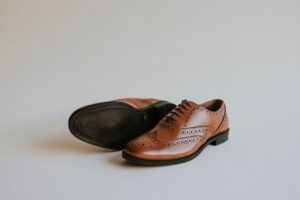The Fashion Blog

How to Dress for Success: The Ultimate Business Attire Guide
In the world of business, first impressions are pivotal. The way you dress not only reflects your personal style but also communicates your professionalism and attention to detail. Whether you’re stepping into an office for the first time or preparing for a crucial meeting, understanding how to dress for success is an essential skill. This ultimate guide to business attire will provide you with the insights and tips you need to navigate the world of formal and business fashion with confidence.

Key Benefits of Dressing for Success
Dressing appropriately for the business environment is more than just a matter of looking good; it’s about embodying the values and culture of your workplace. Let’s delve into why dressing for success is important and how it can impact your career.
Enhancing Professional Image
Your attire is a visual representation of your professionalism. Wearing the right business attire can enhance your credibility and make you appear more competent. It shows that you respect your role and the organisation you work for, which can positively influence how others perceive you.
Boosting Confidence
When you look good, you feel good. Wearing well-fitted, stylish formalwear can boost your confidence, making you more self-assured in meetings and presentations. This confidence can translate into better performance and increased opportunities for career advancement.
Fostering Workplace Respect
Appropriate business attire can foster respect among colleagues and superiors. It demonstrates that you understand and adhere to the professional standards of your workplace, which can lead to stronger professional relationships and a more harmonious work environment.
Step-by-Step Guide to Business Attire
Now that we understand the importance of dressing for success, let’s explore how to achieve the perfect business look. This step-by-step guide will provide you with actionable insights and fashion tips to ensure you always look your best in the office.
Understanding Dress Codes
Before you start building your business wardrobe, it’s crucial to understand the dress codes that apply to your workplace. Here are the most common types:
Business Formal
Business formal is the most conservative dress code. It typically requires a dark suit, a white or light-coloured shirt, and a tie for men. Women should opt for a tailored skirt or trouser suit with a blouse. This dress code is often required for high-level meetings and formal events.
Business Casual
Business casual is more relaxed but still maintains a professional appearance. Men can wear dress trousers or khakis with a collared shirt, while women can choose a skirt or trousers with a blouse or sweater. Jackets and ties are optional but can add a polished touch to your outfit.
Smart Casual
Smart casual is the most relaxed dress code, allowing for more personal expression while maintaining a professional look. Men might wear chinos with a polo shirt or a casual button-down, while women can opt for a dress or skirt with a casual top. This dress code is often suitable for creative industries or casual Fridays.
Building a Versatile Wardrobe
Once you’ve identified the dress code for your workplace, it’s time to build a versatile wardrobe that allows you to dress appropriately for any occasion. Here are some essential pieces to consider:
Best Formalwear for Men
Investing in high-quality formalwear is crucial for men aiming to dress for success. Here are some key pieces to include in your wardrobe:
- Suits: Choose classic colours like navy, grey, and black. Ensure they are well-fitted and made from quality fabrics.
- Dress Shirts: Opt for white and light blue shirts as they are versatile and easy to pair with any suit.
- Ties: A selection of ties in various patterns and colours can add variety to your outfits.
- Shoes: Invest in a good pair of black or brown leather shoes. Ensure they are polished and in good condition.
Essential Pieces for Women
For women, creating a professional wardrobe involves selecting versatile pieces that can be mixed and matched. Consider the following:
- Suits: A well-fitted skirt or trouser suit in a neutral colour is a must-have.
- Blouses: Choose blouses in various colours and patterns to add interest to your outfits.
- Dresses: A classic shift dress can be dressed up or down depending on the occasion.
- Footwear: Opt for comfortable yet stylish shoes, such as low heels or flats, in neutral colours.
Accessorising for Impact
Accessories can elevate your business attire and allow you to express your personal style. However, it’s important to keep them understated and professional.
For Men
- Watches: A classic watch can add sophistication to any outfit.
- Belts: Match your belt with your shoes for a cohesive look.
- Cufflinks: These can add a touch of elegance to formal shirts.
For Women
- Jewellery: Opt for simple and elegant pieces, such as stud earrings or a delicate necklace.
- Handbags: Choose a structured handbag in a neutral colour that complements your wardrobe.
- Scarves: A silk scarf can add a pop of colour and sophistication to your outfit.
Additional Expert Tips & Common Mistakes to Avoid
Even with the best intentions, it’s easy to make mistakes when dressing for the office. Here are some expert tips to help you avoid common pitfalls and ensure you’re always dressed for success.

Best Practices
- Fit is Key: Ensure your clothes fit well. Ill-fitting clothes can look sloppy and unprofessional.
- Quality Over Quantity: Invest in a few high-quality pieces rather than a large quantity of low-quality items.
- Grooming Matters: Pay attention to grooming, including hair, nails, and personal hygiene.
Common Mistakes
- Ignoring Dress Codes: Always adhere to your workplace’s dress code. Ignoring it can make you appear unprofessional.
- Over-Accessorising: Keep accessories minimal and professional. Too many accessories can be distracting.
- Neglecting Footwear: Worn-out or inappropriate shoes can ruin an otherwise polished look.
Advanced Insights & Expert Recommendations
Tailoring for Perfection
Investing in tailoring can make a significant difference in how your clothes fit and look. A well-tailored suit or dress can enhance your appearance and boost your confidence.
Seasonal Wardrobe Updates
Keep your wardrobe fresh by updating it seasonally. Incorporate lighter fabrics in the summer and opt for layers in the winter. This not only keeps you comfortable but also ensures your attire is appropriate for the season.
Sustainable Fashion Choices
Consider sustainability when building your business wardrobe. Choose quality pieces that will last and opt for brands that prioritise ethical and sustainable practices. This not only benefits the environment but also aligns with the values of many modern workplaces.

Conclusion: Master the Art of Dressing for Success
Dressing for success is an essential part of navigating the business world. By understanding the importance of business attire, building a versatile wardrobe, and adhering to best practices, you can make a positive impression and advance your career.
Remember, your attire is a reflection of your professionalism, so invest in quality pieces, pay attention to fit, and always adhere to your workplace’s dress code. As you step into your next meeting or presentation, let your attire speak volumes about your confidence and competence.
Are you ready to redefine your business wardrobe and dress for success? Start today by evaluating your current wardrobe, identifying gaps, and investing in pieces that will elevate your professional image.









